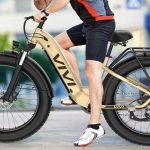A recent Harvard study led by Harvard Professor Daniel Lieberman, “Foot Strike and Injury Rates in Endurance Runners: a retrospective study” finds that that runners – at-least cross-country runners -who rear foot strike – at least cross-country runners – have approximately twice the rate of injury than those who forefoot strike.
The study tested if runners who habitually forefoot strike have different rates of injury than runners who habitually rearfoot strike. Researchers measured the strike characteristics of middle and long distance runners from a collegiate cross country team and quantified their history of injury, including the incidence and rate of specific injuries, the severity of each injury, and the rate of mild, moderate and severe injuries per mile run.
Of the 52 runners studied, 36 (59 percent overall) primarily used a rearfoot strike and 16 (31 percent) primarily used a forefoot strike. Approximately 74 percent of runners experienced a moderate or severe injury each year, but those who habitually rearfoot strike had approximately twice the rate of repetitive stress injuries than individuals who habitually forefoot strike. Traumatic injury rates were not significantly different between the two groups. A generalized linear model showed that strike type, sex, race distance, and average miles per week each correlate significantly (p<0.01) with repetitive injury rates.
The report concluded, “Competitive cross country runners on a college team incur high injury rates, but runners who habitually rearfoot strike have significantly higher rates of repetitive stress injury than those who mostly forefoot strike. This study does not test the causal bases for this general difference. One hypothesis, which requires further research, is that the absence of a marked impact peak in the ground reaction force during a forefoot strike compared to a rearfoot strike may contribute to lower rates of injuries in habitual forefoot strikers.”
The study ran in the January issue of Medicine & Science in Sports & Exercise, the official journal of the The American College of Sports Medicine.
In conjunction with this study Dr. Lieberman's team also put out a study in regards to performance in minimal shoes, titled “Effects of Footwear and Strike Type on Running Economy” that showed that runners in minimal footwear have increased efficiency than those in traditional running shoes.
The study tested if running economy differs in minimal shoes versus standard running shoes with cushioned, elevated heels and arch supports, and in forefoot versus rearfoot strike gaits. Researchers measured the cost of transport (mlO2/kg/m) in subjects who habitually run in minimal shoes or barefoot while they were running at 3.0 m/s on a treadmill during forefoot and rearfoot striking while wearing minimal and standard shoes, controlling for shoe mass and stride frequency. Force and kinematic data were collected when shod and barefoot to quantify differences in knee flexion, arch strain, plantarflexor force production, and Achilles tendon-triceps surae strain.
The results found that after controlling for stride frequency and shoe mass, runners were 2.41 percent more economical in the minimal shoe condition when forefoot striking and 3.32 percent more economical in the minimal shoe condition when rearfoot striking (p<0.05). In contrast, forefoot and rearfoot striking did not differ significantly in cost for either minimal or standard shoe running. Arch strain was not measured in shoes condition but was significantly greater during forefoot than rearfoot striking when barefoot. Plantarflexor force output was significantly higher in forefoot than rearfoot striking, and in barefoot than shod running. Achilles tendon-triceps surae strain and knee flexion were also lower in barefoot than standard shoe running.
The study concluded, “”Minimally shod runners are modestly but significantly more economical than traditionally shod runners regardless of strike type, after controlling for shoe mass and stride frequency. The likely cause of this difference is more elastic energy storage and release in the lower extremity during minimal shoe running.”
The second study likewise appeared in the January issue of Medicine & Science in Sports & Exercise.
VivoBarefoot, the U.K. footwear brand based on barefoot principles, heralded the research's findings in a press release.









